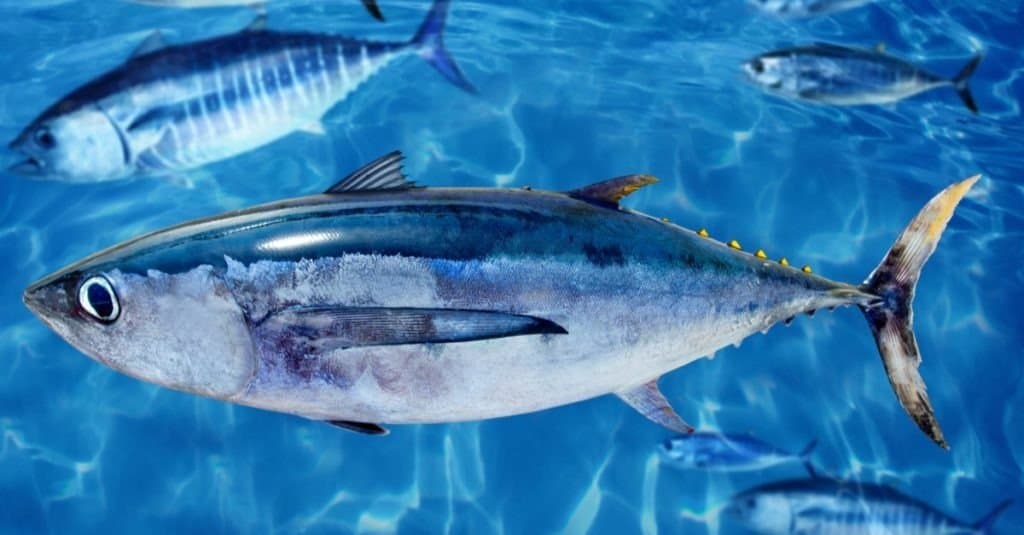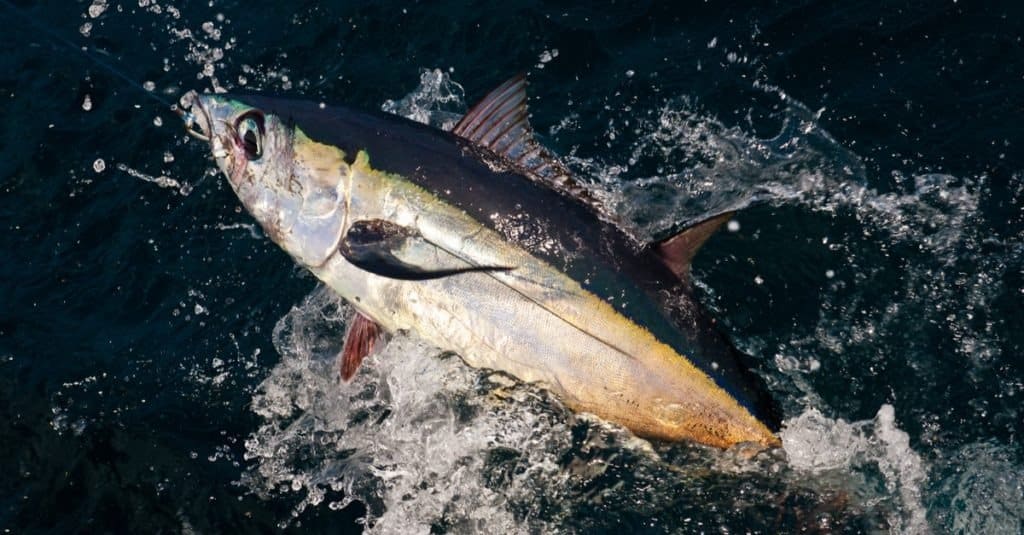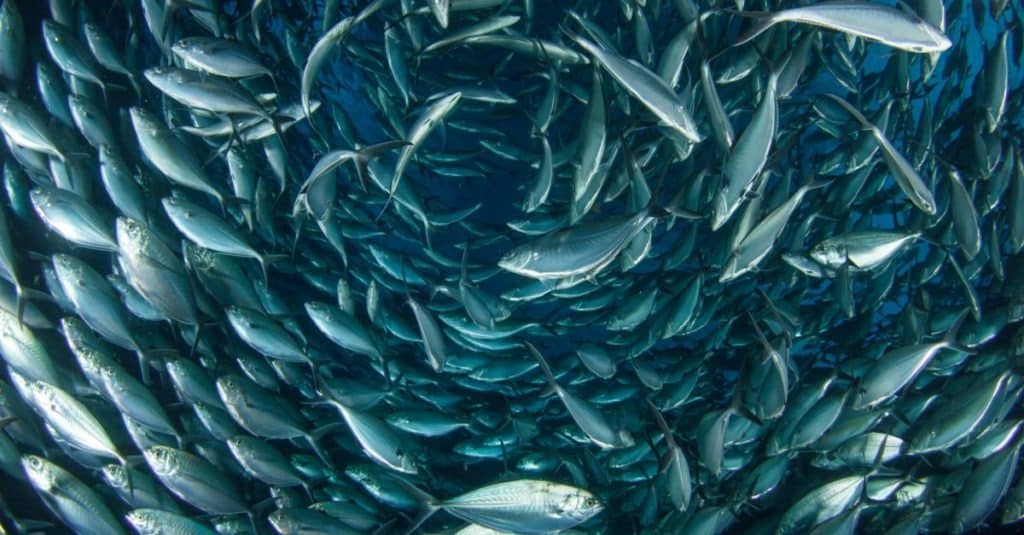Albacore tuna – also known as longfin tuna – is one of the most popular fish species in the country. You’ll find cans of the flesh packaged in water or oil, lining the shelves of your local grocery store. But that fishy flesh has to come from somewhere.
While it is commercial fishermen who bring in these large fishes for the canneries and public consumption of albacore tuna, local fishermen also often drag these giants in while out there on the ocean. Commercial fishermen don’t get to snag records when they’re on the clock, either.
Let’s take a look at the largest albacore ever caught in North Carolina and see how it compares to the rest of the world’s records.
All About the Albacore

The albacore tuna is a large, blue and silver fish that we love to make into sushi, can for preserved food reserves, and use for cat food.
©lunamarina/Shutterstock.com
The fish with dark blue backs, silver sides and bellies, and long pectoral fins, Albacore tuna typically grow to between 21 and 30 inches in length (max of 4 feet 7 inches for average sizes), with an average weight of 35 pounds at the large end. They bear conical snouts and large eyes.
Albacore ( scientifically known as Thunnus alalunga), or longfin tuna, belongs to the tuna species in the order Scombriformes. They are known as pelagic predators (water column zone fishers) that eat fish, crustaceans, and cephalopods, with the latter as their main food source, unlike other tuna species.
The oviparous fish reproduce between November and February, with females releasing as many as 2 million eggs in a single cycle. The fish fry stick close to their spawning point for the first year of life, then move on in schools formed as they mature together. Their schools may include yellowfin tuna, bluefin tuna, and skipjack tuna, as well, though – so you never know what you might catch in a single highly migratory tuna school!
Where Do You Find Longfin Tuna?

Albacore tuna live in the Indian, Atlantic, and Pacific Oceans plus the Mediterranean Sea!
©lunamarina/Shutterstock.com
Albacore tuna has a fairly large distribution throughout the world. The fish may be found in the temperate waters of the Atlantic, Indian, and Pacific Oceans, as well as in the Mediterranean Sea. This means the open water ranges of tropical and temperate areas.
The fish are highly migratory and swim extremely long distances throughout the oceans, looking for the perfect temperature all year round. These ideal zones draw the fish for mating and spawning and keep the fish moving as the currents move.
Juvenile albacore typically school near oceanic fronts and temperate discontinuities, while adults are found at depths of 1,250 feet and deeper, seeking prey.
How Big Was the Largest Albacore Caught in North Carolina?
Off the coast of North Carolina, the largest albacore ever caught was brought in by Brien L. Hamer in 2001. The fish weighed in at 62 pounds and 0 ounces, dragged in from off the Oregon Inlet.
What’s the World Record for an Albacore?

Though they swim in schools, they are caught individually by recreational fishers frequently, including world and state record holders.
©David Vogt/Shutterstock.com
In 1977, on November 19, the record for the world’s largest albacore was taken by Siegfried Dickemann. He was fishing at Grand Canaria, Canary Islands, Spain. The albacore weighed in at 88 pounds, 2 ounces.
The Importance of Albacore in Today’s Economy
While some may be more familiar with yellowfin tuna listed on their sushi menus, albacore tuna are also used for this purpose. The fish is favored in many seafood components of the industry. The albacore impacts both commercial and recreational fisheries. It largely makes up the United States tuna-canning industry.
Nutritionally speaking, these fish offer lean protein loaded with healthy omega-3 fats and selenium (plus other important nutrients). They do come in slightly higher in fat and calories than other tuna species. The differences are so minimal that it doesn’t matter. And, because they’re so large and widely distributed, this has helped to make them to beneficial to the world’s economy.
Albacore in Conservation

Albacore tuna swim in giant schools of fish. These are based on the age group of the given fish in the region when schools are formed.
©Rich Carey/Shutterstock.com
For a time, the albacore fish was so important to various economies that it became dramatically overfished. This led to the fish being listed as Near Threatened by the International Union of Conservation of Nature (IUCN). However, laws and regulations have helped to redeem this. Now the albacore is still fished but has been placed on the Least Concern list once again.
The photo featured at the top of this post is © David Vogt/Shutterstock.com
Thank you for reading! Have some feedback for us? Contact the AZ Animals editorial team.







